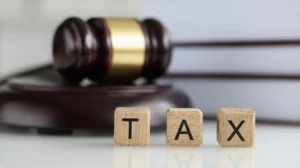This is the final instalment in a series of blogs on the topic of recent amendments to the Duties Act 1997 (NSW) (the Act) – and, of course, what this means for you, and how we can help.
This blog covers the transfer of certain business property between family members, surcharge purchaser duty (in the case of an Australian-based developer), and tax avoidance schemes.
Transfer of certain business property between family members
Section 274 of the Act
Prior to the amendments, the exemption from duty on primary production land transfers between family members only applied if the transferee was an individual.
From 19 May 2022, s 274 of the Act extends the exemption so that it also applies when the transferee is not an individual, but is acting in the capacity of:
- an executor of a deceased estate;
- a proprietary limited company;
- a trustee of a:
- bare trust;
- self-managed super fund;
- discretionary trust; or
- private unit trust scheme.
In each case, the family member must, instead of being the transferee, be the person directing the transferee.
In addition, if the transferee is a proprietary limited company, or a trustee of a discretionary trust, or a trustee of a private unit trust scheme, the family member directing the transferee must maintain the person’s minimum 25% interest in the transferee for 3 years after the transfer for the exemption to apply.
If the family member directing the transferee ceases to maintain a minimum 25% interest in the transferee at any time before 3 years from the transfer of land, they must lodge the transaction for reassessment via eDuties within 14 days of the interest reducing.
What are the evidentiary and identification requirements?
There are some changes to the evidentiary requirements (see s 274). A new form has been created for this transaction, and there have been minor changes made to the Purchaser/Transferee Declaration forms. The following new and/or updated forms must be used for transactions entered into on or after 19 May 2022:
- Purchaser/Transferee Declaration form for individual; or
- Purchaser/Transferee Declaration: non-individuals; and
- Application for Exemption – Transfer of land used for primary production between family members (ODA 071A).
Surcharge purchaser duty – Australian-based developer
Section 104ZJA of the Act
The new section extends the refund of surcharge purchaser duty that is paid in relation to a transfer of residential land, if, after the transfer, the land is used by the transferee wholly or predominantly for commercial or industrial purposes.
The new section also permits a reassessment of surcharge purchaser duty more than 5 years after an initial assessment of liability in certain circumstances.
Tax avoidance schemes
The amendments have removed Chapter 11A of the Act. Instead, tax avoidance schemes will be administered under Part 10A of the Taxation Administration Act 1996 (NSW) (the Tax Act). This means that all provisions will apply to taxation laws defined in Part 1 of the Tax Act. Section 4 of the Tax Act defines “taxation laws” as the following:
- the Taxation Administration Act 1996 (NSW);
- the Betting Act 2001 (NSW);
- the Duties Act 1997 (NSW);
- the Emergency Services Levy Act 2017 (NSW);
- the Gaming Machine Tax Act 2001 (NSW);
- the Health Insurance Levies Act 1982 (NSW);
- the Insurance Protection Tax Act 2001 (NSW);
- the Land Tax Act 1956 (NSW);
- the Land Tax Management Act 1956 (NSW);
- the Parking Space Levy Act 2009 (NSW);
- the Payroll Tax Act 2007 (NSW);
- the Payroll Tax Deferral (BlueScope Steel) Act 2015 (NSW); and
- a regulation under any of the above.
The amendments to the Tax Act are aimed at deterring tax avoidance schemes.
Divisions 1 and 2 of Part 10A re-enact, in a modified form, the provisions of the duty avoidance provision in Chapter 11A of the Act, which deter schemes to avoid duty. The amendment extends the duty avoidance provisions’ application to schemes for the avoidance of all kinds of tax liability, rather than only liability to pay duty.
Division 3 of Part 10A prohibits the promotion of tax avoidance schemes, and also provides for the following:
- ordering payment of civil penalties for breaches of the prohibition;
- making injunctions in relation to proposed breaches of the prohibition; and
- entering voluntary undertakings in connection with tax avoidance schemes.
Division 3 of Part 10A aims to deter the promotion of tax avoidance schemes in terms that are similar to equivalent provisions in the Taxation Administration Act 1953 (Cth).
Click on the links to read Part 1 and Part 2 of this blog series.
Blog written by Malcolm Campbell and Luke Barber














